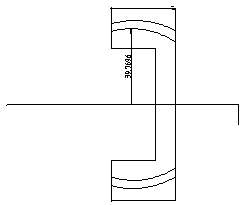Gents,
I have a general question for the experts here that have tuned or designed engine/crankshaft tuned vibration dampers before. (preferably the kind on the C/S nose)
I have been reading through some of the info on the forum here in this regard and am wondering if someone has some good insight about a comment in this old thread (
In it about halfway down ivymike says
This comment about the TVD that were the most effective being the ones that didn't necessarily dissipate the most energy is counter-intuitive to an extent. I have done a decent amount of theoretical linear TVD work before and can know from that there is an optimal damping that reduces the effectiveness at the frequency of interest but broadens its working range so that it doesn't create 2 ineffective regions below and above this frequency of interest.
Maybe he is really just referring to the damping and not energy - is it possible to look at this from strictly an energy point of view?
Any comments are appreciated.
Thank you.
Fe
I have a general question for the experts here that have tuned or designed engine/crankshaft tuned vibration dampers before. (preferably the kind on the C/S nose)
I have been reading through some of the info on the forum here in this regard and am wondering if someone has some good insight about a comment in this old thread (
In it about halfway down ivymike says
ivymike said:"I quit reading it after the author claimed that his dampener both absorbed less power and also provided greater dampening. I don't believe the two results are mutually compatible; greater dampening would also imply greater energy absorption.
"
seven years ago when I last did TV analysis on a regular basis, that result was not uncommon. The most effective damper commonly did not dissipate the most heat - they often dissipated less heat than those which were less effective at reducing vibrations. It's a bit fuzzy now, but I think that result was common with elastomeric or viscoelastic dampers, and not so much with viscous ones.
This comment about the TVD that were the most effective being the ones that didn't necessarily dissipate the most energy is counter-intuitive to an extent. I have done a decent amount of theoretical linear TVD work before and can know from that there is an optimal damping that reduces the effectiveness at the frequency of interest but broadens its working range so that it doesn't create 2 ineffective regions below and above this frequency of interest.
Maybe he is really just referring to the damping and not energy - is it possible to look at this from strictly an energy point of view?
Any comments are appreciated.
Thank you.
Fe

